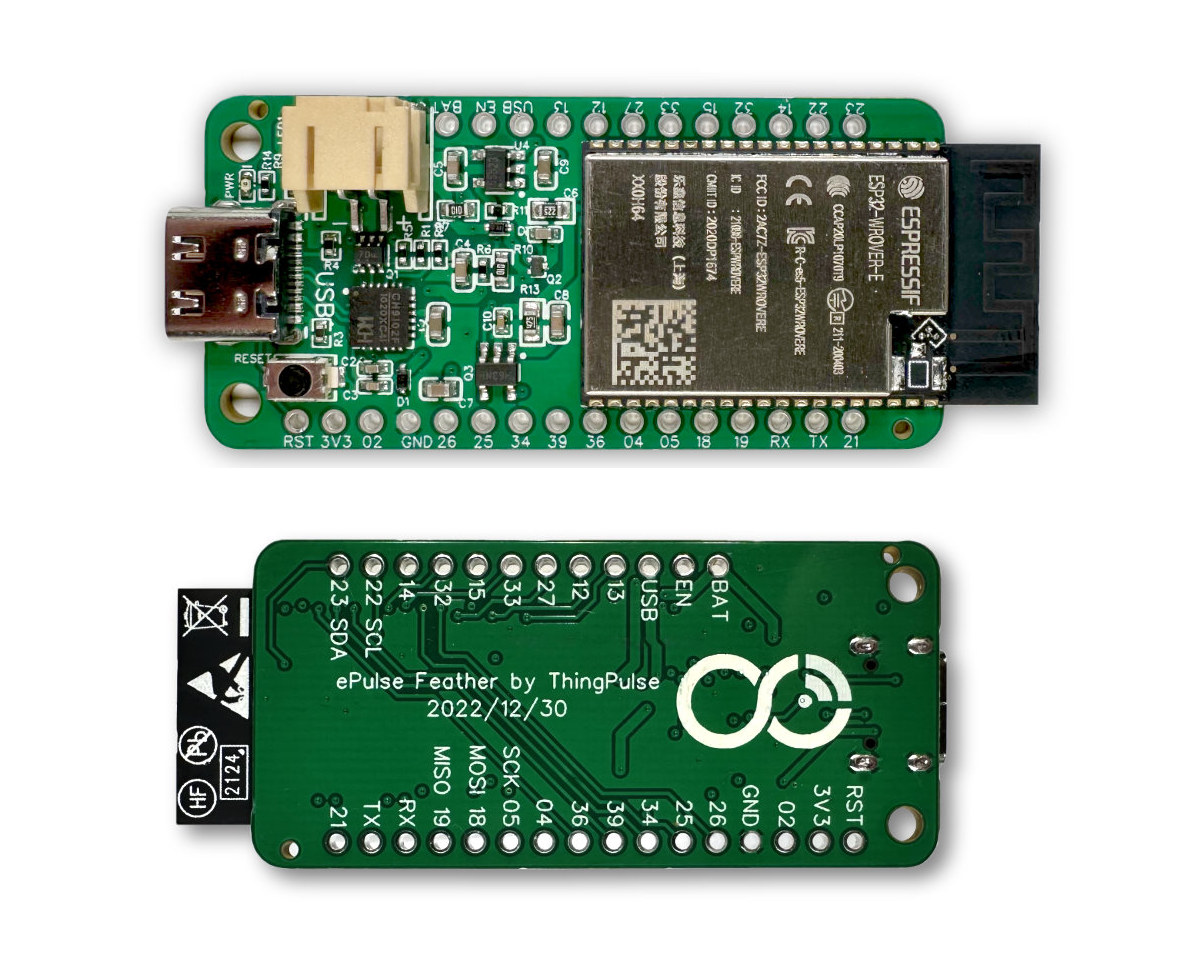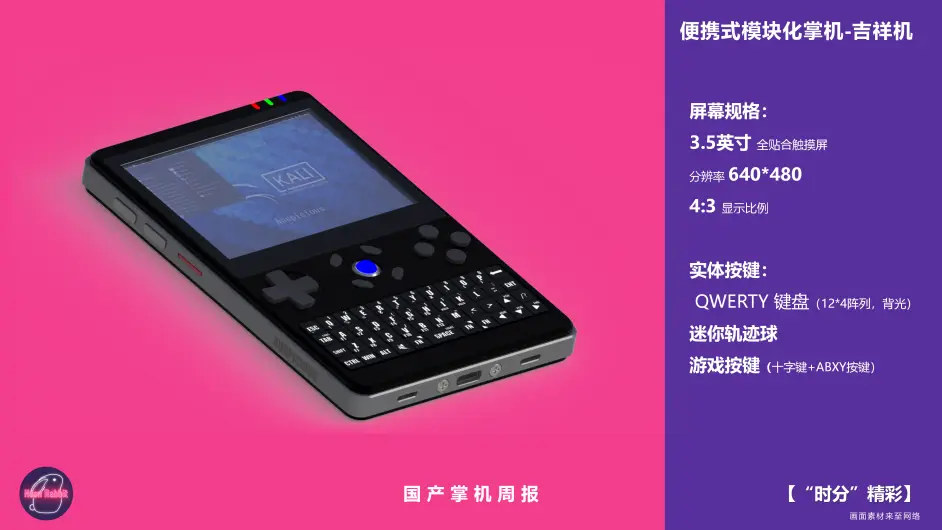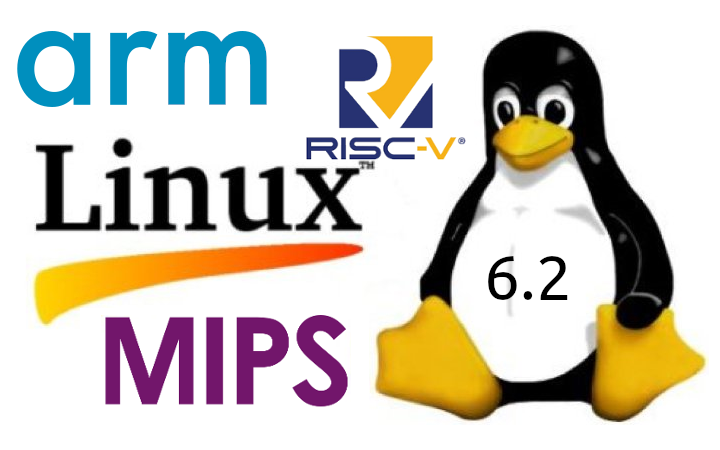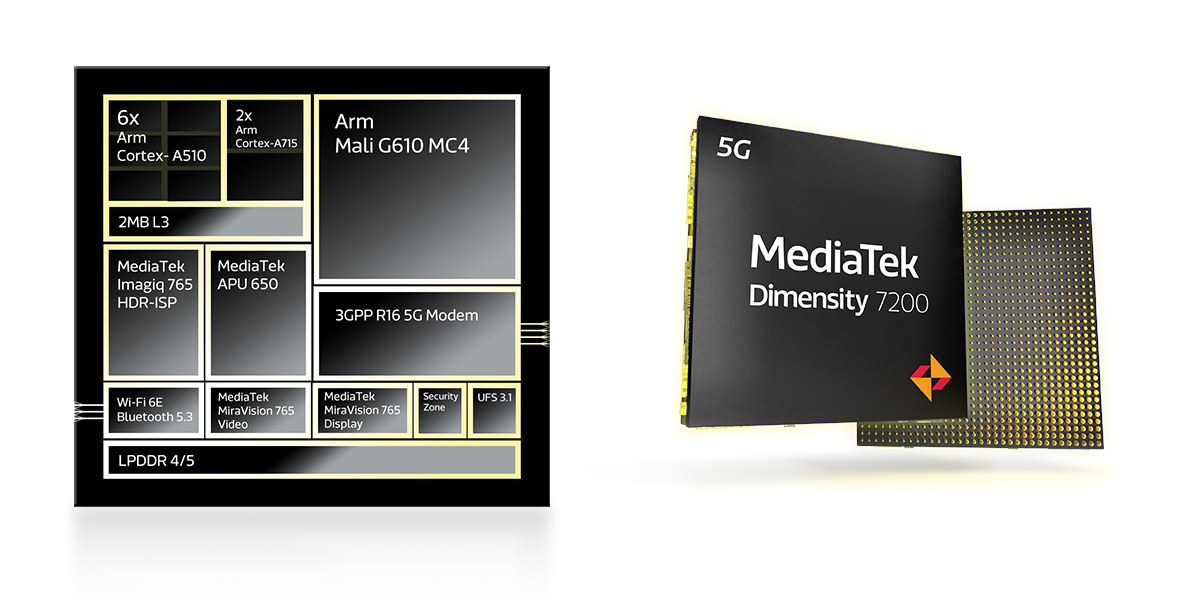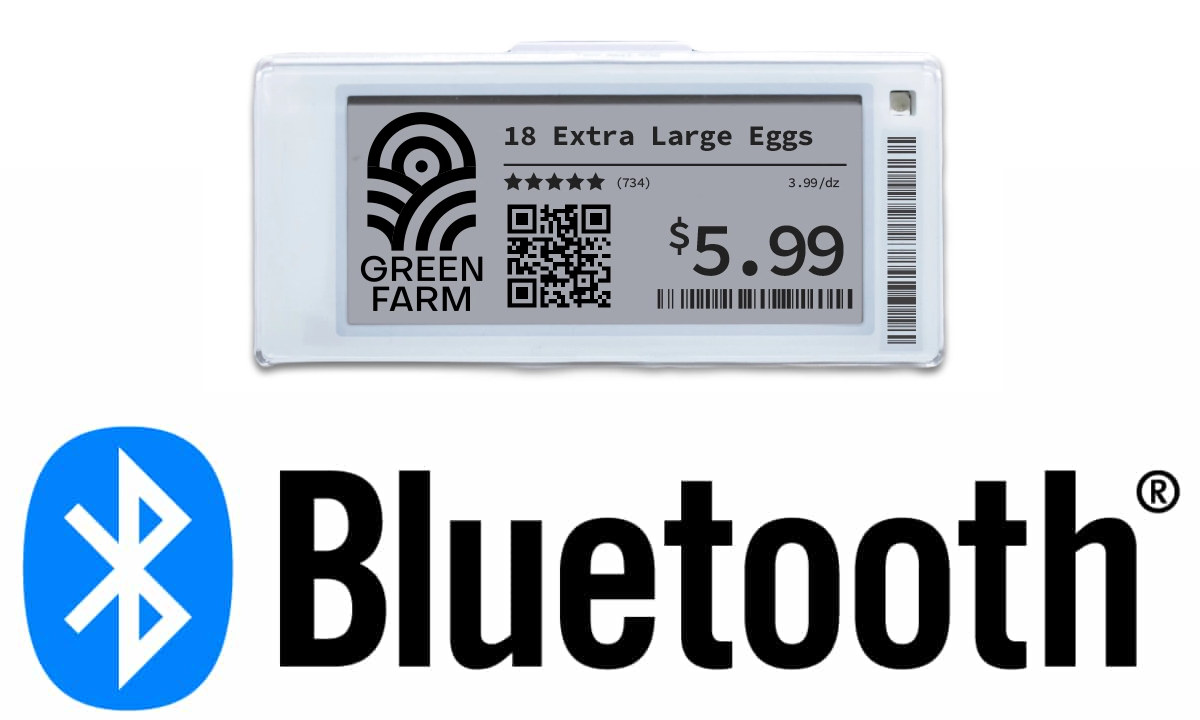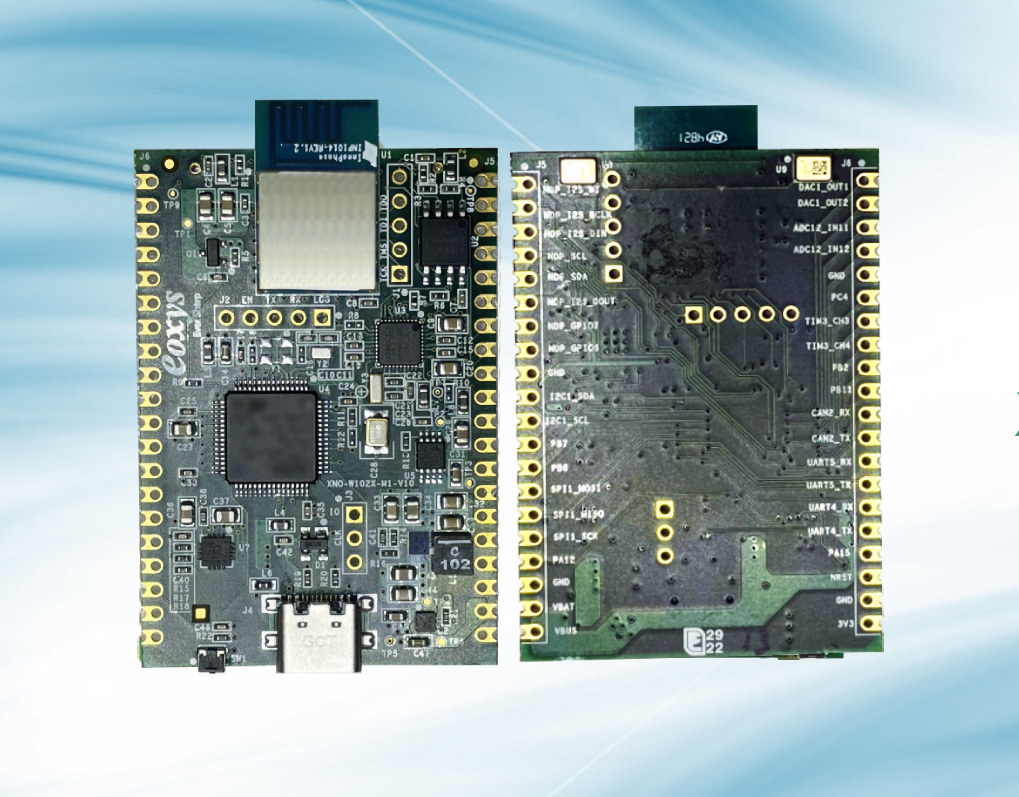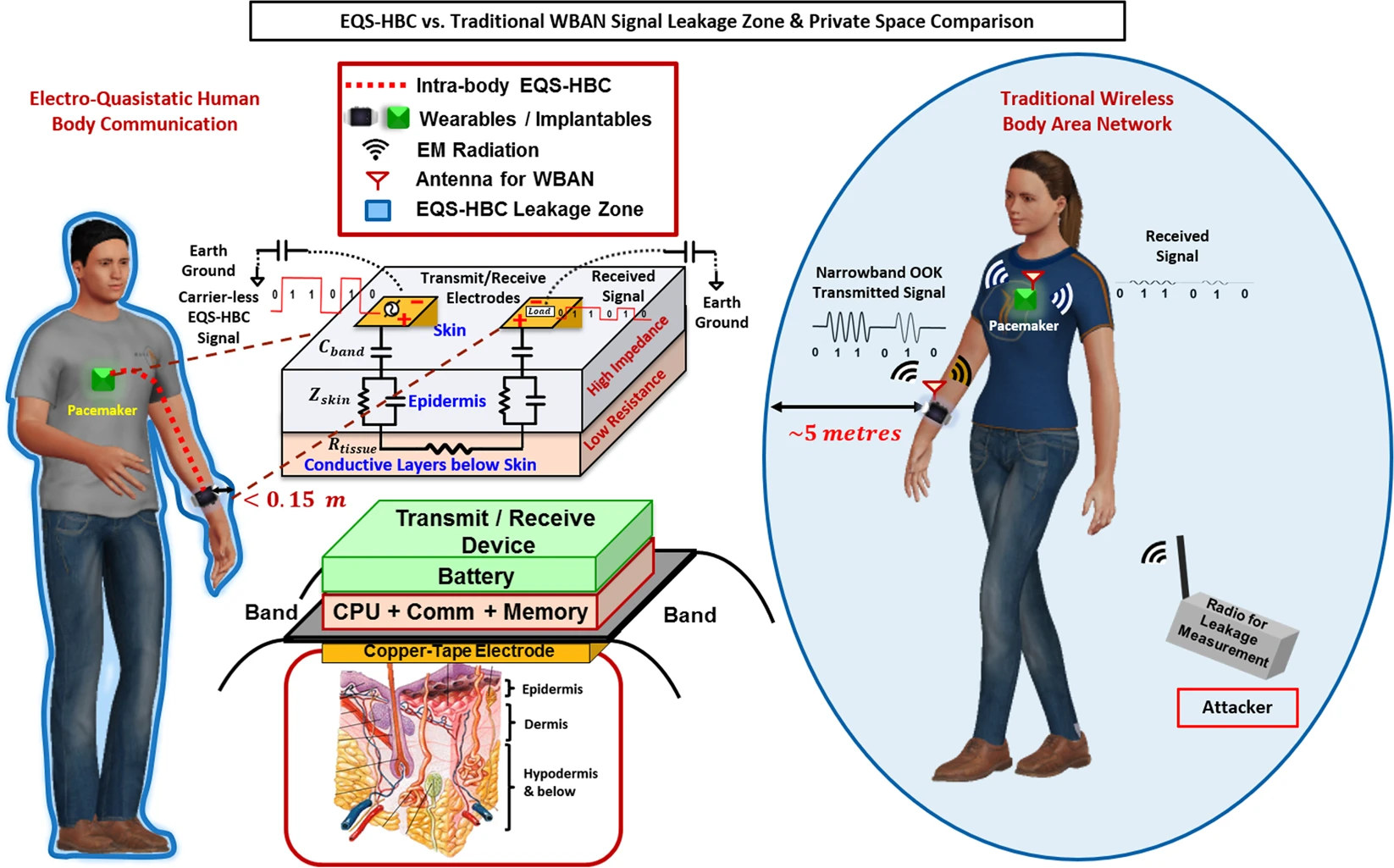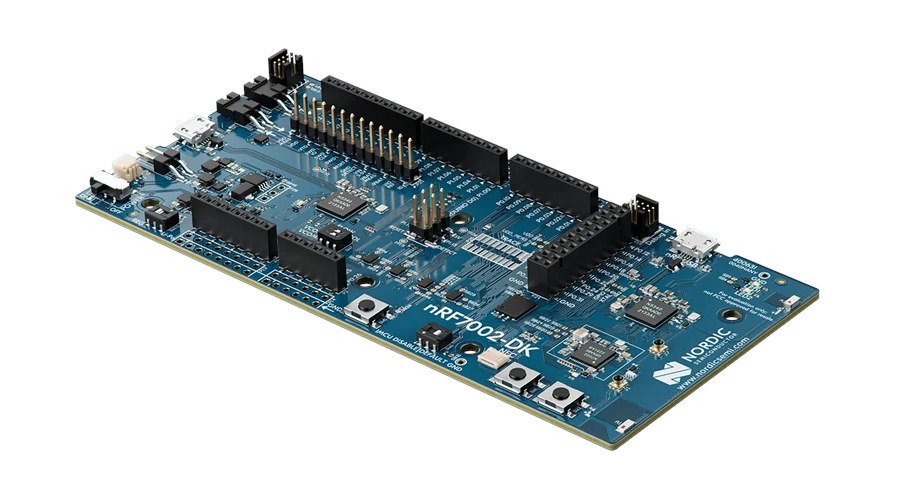Thingpulse ePulse Feather is an ESP32 development board following Adafruit’s Feather form factor and optimized for low power with 12 to 27 uA deep sleep power consumption. The board is based on the ESP32-WROVER with 8MB Flash and 8MB SPRAM and comes with a USB-C connector for charging the battery and programming through a CH9102F UART chip, as well as the I/Os headers provided by the Feather form factor. The board can be especially useful in battery-operated WiFi remote controls for home automation or other purposes that sleep most of the time until the user presses one of the buttons. ThingPulse ePulse Feather specifications: Wireless module – Espressif Systems ESP32-WROVER-E-N8R8 module with ESP32-D0WD-V3 or ESP32-D0WDR2-V3 dual-core microcontroller @ 240 MHz with 8MB QSPI flash, 8MB QSPI PSRAM USB – 1x USB Type-C port for power/charging and programming via CH9102F UART to TTL chip. Expansions – 12-pin + 16-pin headers with […]
Auspicious Machine modular handheld Linux PC with keyboard takes various Arm-based SoMs
The “Auspicious Machine” may look like a Blackberry phone, but it’s actually a handheld Linux PC with a built-in QWERTY keyboard and a 3.5-inch display that can be powered by a range of system-on-modules (SoM). The computer, whose name can also be translated as the “Auspicious Phone”, can be used as a Linux terminal with GPIO control, and for gaming with Linux distributions such as Batotera or RetroBat with the D-Pad and ABXY buttons found on the device. Auspicious Machine specifications: Supported SoMs Bigtreetech CB1 with Allwinner H616 quad-core Cortex-A53 processor and 1GB DDR4 Raspberry Pi CM4 with Broadcom BCM2711 quad-core Cortex-A72 processor, up to 8GB LPDDR4, up to 32GB eMMC flash Radxa CM3 with Rockchip RK3566 quad-core Cortex-A55 processor, up to 4GB LPDDR4, up to 64GB eMMC flash Banana Pi BPI-CM4 with Amlogic A311D octa-core Cortex-A73/A55 processor with 4GB LPDDR4 and 16GB eMMC flash Storage – MicroSD card socket […]
Linux 6.2 release – Main changes, Arm, RISC-V, and MIPS architectures
Linux 6.2 has just been released with Linus Torvalds making the announcement on LKML as usual: So here we are, right on (the extended) schedule, with 6.2 out. Nothing unexpected happened last week, with just a random selection of small fixes spread all over, with nothing really standing out. The shortlog is tiny and appended below, you can scroll through it if you’re bored. Wed have a couple of small things that Thorsten was tracking on the regression side, but I wasn’t going to apply any last-minute patches that weren’t actively pushed by maintainers, so they will have to show up for stable. Nothing seemed even remotely worth trying to delay things for. And this obviously means that the 6.3 merge window will open tomorrow, and I already have 30+ pull requests queued up, which I really appreciate. I like how people have started to take the whole “ready for […]
MediaTek Dimensity 7200 Armv9 Cortex-A715/A510 processor targets mainstream 5G smartphones
Manufactured with a 4nm processor, the MediaTek Dimensity 7200 is an octa-core Armv9 processor designed for mainstream smartphones. with two Cortex-A715 cores, six Cortex-A510 cores, a Mali-G610 MC4 GPU, as well as 5G, WiFi 6E, and Bluetooth 5.3 connectivity. So far, I had only seen Armv9 SoCs with a mix of Cortex-A510 “LITTLE” cores, Cortex-A710/A715 “big” core, and Cortex-X2 or Cortex-X3 “flagship cores” as found in the Dimensity 9200 processor, but the Dimensity 7200 is one of the first Armv9 processors – one other being the Snapdragon 7 Gen 1 – without a Cortex-X core in order to provide a more affordable solution. MediaTek Dimensity 7200 specifications: CPU 2x Arm Cortex-A715 up to 2.8GHz 6x Arm Cortex-A510 2MB L3 cache GPU – Arm Mali-G610 MC4 with MediaTek HyperEngine 5.0 APU – MediaTek APU 650 AI accelerator DPU/VPU – MediaTek MiraVision 765 engine for display and 4K HDR video decoding/encoding Memory […]
Bluetooth 5.4 adds electronic shelf label (ESL) support
The Bluetooth Special Interest Group (SIG) has just adopted the Bluetooth 5.4 Core Specification with features such as PAwR and EAD designed for Electronic Shelf Label (ESL) systems. The Bluetooth 5.3 Core Specification was adopted in August 2021 with various improvements, and Bluetooth 5.4 now follows with features that appear to be mainly interesting for large-scale Bluetooth networks with support for bi-directional communication with thousands of end nodes from a single access point, as would be the case for Electronic Shelf Label or Shelf Sensor systems. Four new features have been added to Bluetooth 5.4: Periodic Advertising with Responses (PAwR) – PAwR is a new Bluetooth Low Energy (LE) logical transport that provides a way to perform energy-efficient, bi-directional, communication in a large-scale one-to-many topology with up to up to 32,640 devices. Devices can also be allocated to groups allowing them to listen only to their group’s transmissions. An Electronic […]
Eoxys Xeno+ Nano ML board combines NuMicro M2354 or STM32L4 MCU with Talaria TWO ultra low power WiFi & BLE 5.0 module
Eoxys Xeno+ Nano ML is a wireless machine learning (ML) board with either Nuvoton NuMicro M2354 or STMicro STM32L4 microcontroller, InnoPhase IoT’s Talaria TWO ultra-low power Wi-Fi and BLE 5.0 module, and the Syntiant Core 2 NDP120 neural decision processor we first noticed in the Arduino Nicla Voice module a few weeks ago. The boards/modules are designed for intelligent and secure IoT devices for smart home, industrial, and medical automation applications, and the company claims it can be used in Wi-Fi IoT sensors with up to 10+ years thanks to the low-power chips and circuitry used in the design. Eoxys Xeno+ Nano ML specifications: General purpose MCU (one or the other) STMicro STM32L4 Arm Cortex-M4 microcontroller at 80MHz with 1MB flash, 128KB/352KB SRAM Nuvoton NuMicro M2354 Arm Cortex-M23 microcontroller at 96MHz with 1MB flash, 128KB SRAM. Wireless module Innophase Talaria TWO ultra-low-power 2.4GHz 802.11b/n/g WiFi 4 and Bluetooth LE 5.0 […]
The Wi-R protocol relies on body for data communication, consumes up to 100x less than Bluetooth
The Wi-R protocol is a non-radiative near-field communication technology that uses Electro-Quasistatic (EQS) fields for communication enabling the body to be used as a conductor and that consumes up to 100x less energy per bit compared to Bluetooth. In a sense, Wi-R combines wireless and wired communication. Wi-R itself only has a wireless range of 5 to 10cm, but since it also uses the body to which the Wi-R device is attached, the range on the conductor is up to 5 meters. While traditional wireless solutions like Bluetooth create a 5 to 10-meter field around a person, the Wi-R protocol creates a body area network (BAN) that could be used to connect a smartphone to a pacemaker, smartwatch, and/or headphones with higher security/privacy and longer battery life. One of the first Wi-R chips is Ixana YR11 with up to 1Mbps data rate, and they are working on a YR21 […]
Nordic Semi nRF7002 DK low-power dual-band WiFi 6 IoT development kit launched for $56 and up
Nordic Semi nRF7002 DK is an IoT development kit based on the nRF5340 dual-core Cortex-M33 multi-protocol wireless SoC and nRF7002 companion chip adding low-power dual-band (2.4GHz and 5.0 GHz) WiFi 6 connectivity. When Nordic Semi introduced the nRF7200 dual-band WiFi 6 companion chip for nRF52840 and nRF5340 wireless SoCs and nRF9160 cellular IoT SiP last summer, the “nRF7002-PDK” development kit was only mentioned in passing with a 3D render and not much else. The company has now announced the availability of the nRF7002 DK to help developers create low-power Wi-Fi 6 IoT applications. nRF7002 DK specifications: Wireless MCU – Nordic Semi nRF5340 dual-core Arm Cortex-M33 microcontroller @ 128/64 MHz with 1 MB Flash + 512 KB RAM for the application core and 256 KB Flash + 64 KB RAM for the network core, Bluetooth 5.1 LE with direction-finding support, Bluetooth mesh, NFC, Thread, Zigbee, 802.15.4, ANT, and 2.4 GHz proprietary […]


